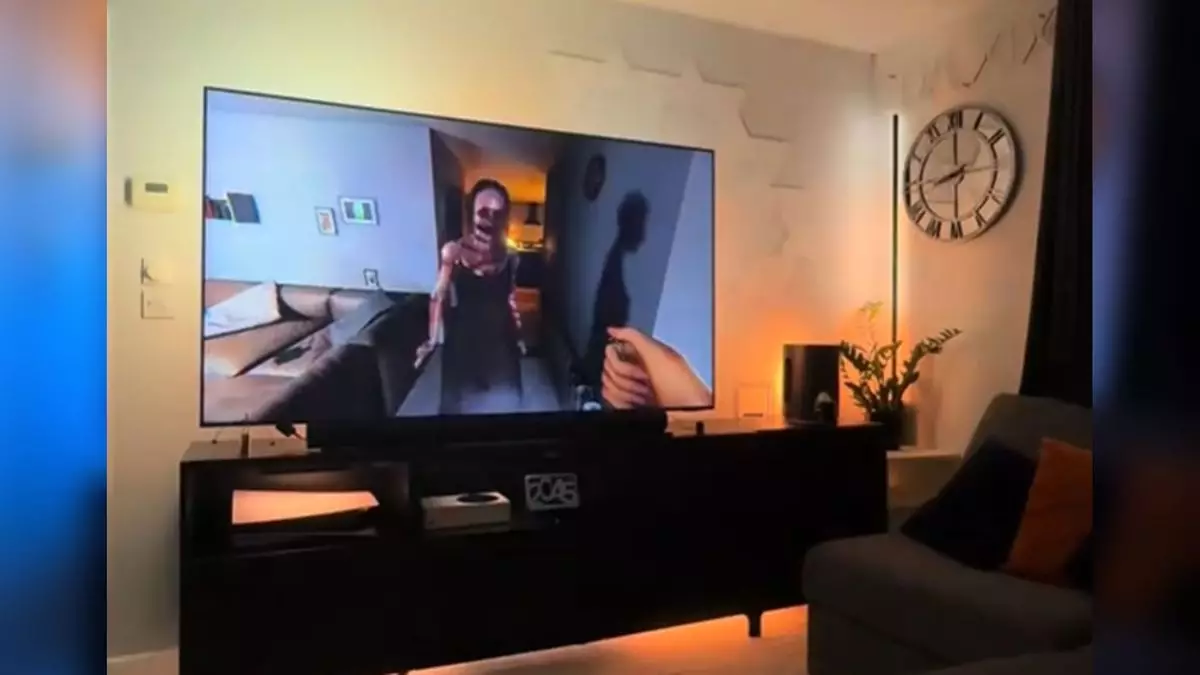In today’s world, the realm of gaming has transcended far beyond basic consoles and controllers, evolving into a multifaceted experience that envelops players in vibrant audio-visual landscapes. The introduction of tools such as VR headsets, racing wheels, and RGB lighting has offered players unparalleled immersion. Gamers are continually seeking innovative ways to heighten their experiences, but there remains a tipping point—one where the technology meant to enhance gameplay crosses over into unsettling territory. This balance is precarious, particularly when pitted against psychologically intense games, such as horror titles.
A particularly illustrative case arises from TikTok user Idaxix, who has dubbed themselves “The LED Light Guy.” Idaxix transformed their gaming space into a radiant spectacle, utilizing a blend of LED strips and smart bulbs to synchronize with the content played on their television. However, the twist in their setup is the integration with a spine-chilling horror game known as Phasmophobia. This game taps into deep-rooted fears, where players act as ghost hunters, only to confront terrifying supernatural entities. The lighting configuration that Idaxix designed intensifies these experiences, flashing ominously in concert with the game’s cues—a decidedly risky venture.
Horror games like Phasmophobia are crafted to induce anxiety and suspense, and the ambient lighting, designed to signal the presence of ghosts, escalates this tension dramatically. Players might find themselves on edge, with every flicker of light signaling potential doom, which can send even seasoned gamers scurrying for solace. As much as some might relish the adrenaline spike that such technology can provide, the reality may leave others feeling overly exposed in an immersive environment that only heightens fear.
For many in the gaming community, horror presents an exhilarating escape. But individuals react differently to fear-induced scenarios, and while some thrive on the exhilaration of a genuinely scary game, others might withdraw at the prospect of encountering digital terrors, only to replace anxiety with mundane distractions—a trip to the kitchen for a snack, perhaps. Personally, while I appreciate a well-crafted horror experience, the combination of unsettling gameplay and complex lighting would unequivocally lead me to retreat.
The ability to create a fully immersive atmosphere does evoke admiration for individuals like Idaxix, who have demonstrated ingenuity and technical prowess. After watching a similar setup during a recent Razer demo showcasing their headsets and haptic technology, I couldn’t help but wonder about the synergy between sensory triggers and gameplay immersion. Through these technologies, developers can transmute a gaming session into a multi-dimensional encounter, where the convergence of light, sound, and tactile feedback creates a potent cocktail of fear and excitement.
Considering where technology can lead in furthering immersive experiences, one can’t help but speculate about future possibilities. What if Phasmophobia incorporated additional sensory elements, such as the Razer Project Arielle cooling gaming chair? Envision a scenario where a slight breeze cools the back of a player’s neck—a realistic reaction as ethereal beings encroach upon their virtual space. Although such innovations would undoubtedly heighten immersion, they could also come with an unexpected mix of comfort and anxiety, raising the stakes of what it means to engage in horror gaming.
As the industry strives for deeper involvement in gameplay experiences, it is crucial for gamers and developers alike to navigate the fine line between exhilaration and discomfort. While many embrace the invitation to explore these digital realms with all their psychological implications, others view such heights of immersion with caution. Ultimately, the key lies in each individual’s threshold, as the allure of technological advancement continues to shape the gaming landscape in unimaginable, often terrifying, ways.
As gaming experiences evolve, it is essential to recognize that the tools intended to amplify enjoyment can easily become unsettling. The relationship between technology and horror is a tangled web of creativity, psychological response, and personal comfort, one that will continue to evolve in the ever-deepening intersection of gaming and immersive technology.

